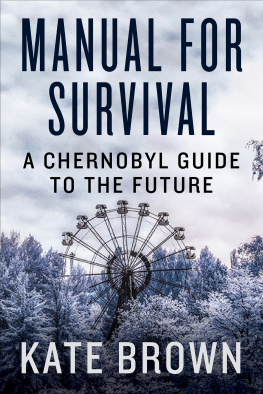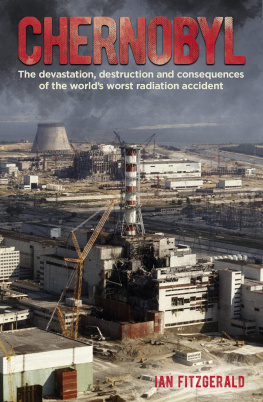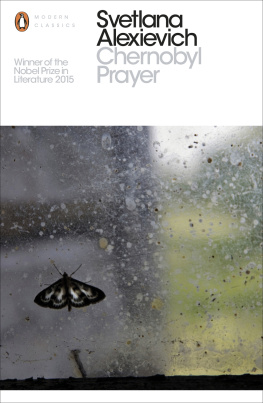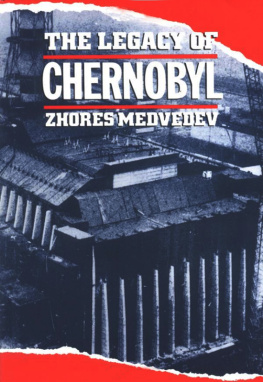
MANUAL FOR SURVIVAL
A CHERNOBYL GUIDE TO THE FUTURE

KATE BROWN

For Marjoleine
CONTENTS
MANUAL FOR SURVIVAL
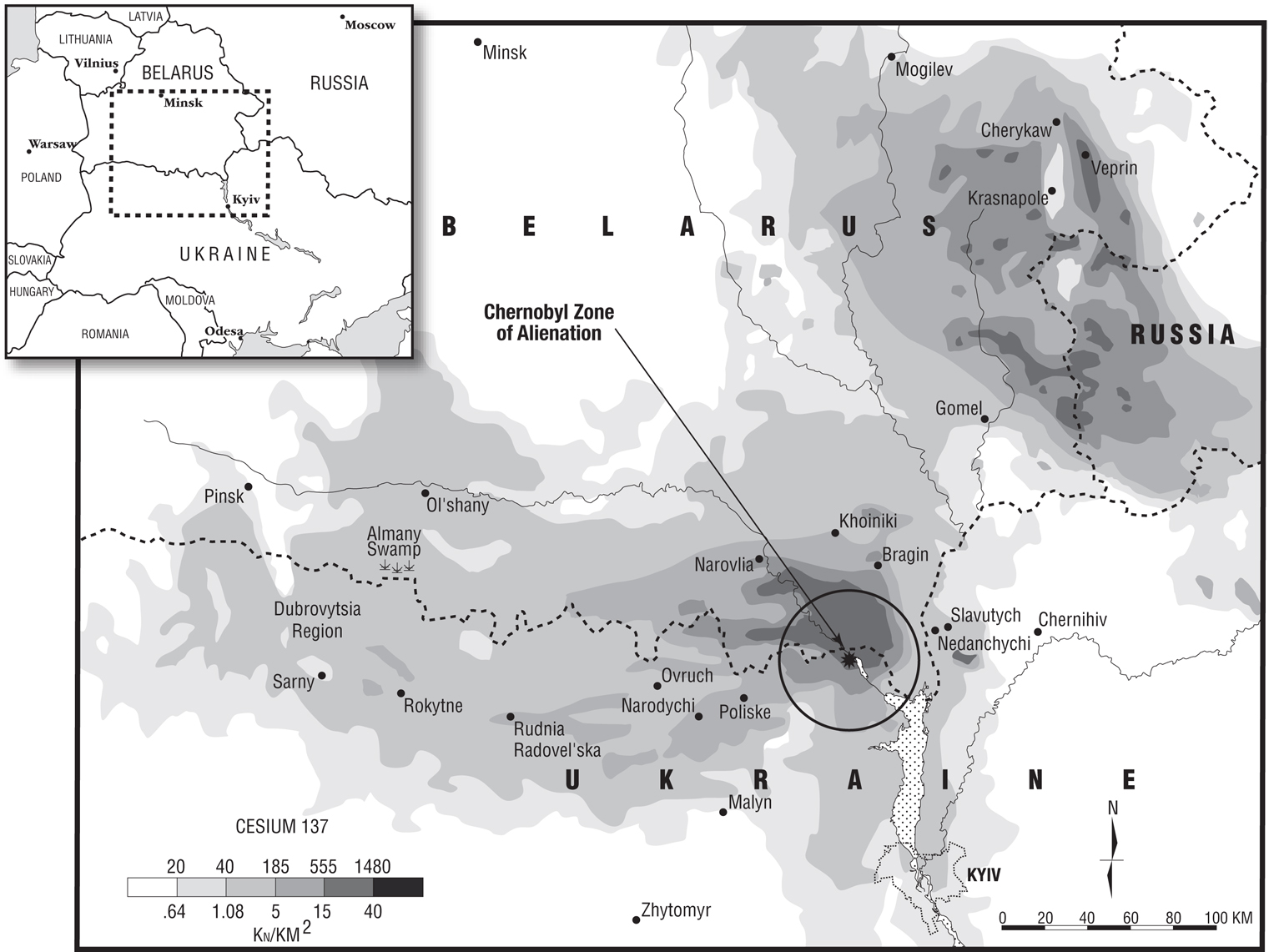
T hree months after the Chernobyl accident in August 1986, the Ukrainian Ministry of Health issued five thousand copies of a pamphlet addressed to residents of communities exposed to radioactive fallout from the Chernobyl atomic station. The pamphlet, speaking directly to the reader (you), begins with assurances.
Dear Comrades!
Since the accident at the Chernobyl power plant, there has been a detailed analysis of the radioactivity of the food and territory of your population point. The results show that living and working in your village will cause no harm to adults or children. The main portion of radioactivity has decayed. You have no reason to limit your consumption of local agricultural produce.
If villagers persisted in reading beyond the first page, they found that the confident tone trails off and pivots in contradiction:
Please follow these guidelines:
Do not include in your diet berries and mushrooms gathered this year.
Children should not enter the forest beyond the village.
Limit fresh greens. Do not consume local meat and milk.
Wash down homes regularly.
Remove topsoil from the garden and bury it in specially prepared graves far from the village.
Better to give up the milk cow and keep pigs instead.
The pamphlet is actually a survival manual, one that is unique in human history. Earlier nuclear accidents had left people living on territory contaminated with radioactive fallout, but never before Chernobyl had a state been forced to admit publicly to the problem and issue a manual with instructions on how to live in a new, postnuclear reality.
As I worked on this story, I watched TV documentaries and read books on Chernobyl. They tend to have a similar plot development. The clock counts down the seconds, as operators in the control room make decisions that can never be undone. Piercing alarms give way to the persistently creepy ticking of radiation meters. The focus turns to broad-shouldered, Slavic-handsome men who are gruffly unconcerned about their well-being. In front of the smoldering reactor, they smoke cigarettes, crush them out, and get on with the job of saving the world from this new, radioactive protagonist. The drama then shifts to hospital wards where the same men have been reduced to skeletons of rotting flesh. Just when you have had enough of blackened skin and intestinal damage, the narrator comes out with a just-kidding moment, asserting that commentators have long exaggerated the Chernobyl accident.
A journalist troops into the forests of the Chernobyl Zone of Alienation, a thirty-kilometer (km) zone around the plant depopulated in the weeks after the accident. The journalist points to a bird and a tree and pronounces the Zone to be thriving! Through cloying music, a voice-over says that, although Chernobyl was the worst disaster in nuclear history, the consequences were minimal. Only fifty-four men died from acute radioactive poisoning and a few thousand children had a nonfatal thyroid cancer, which is easy enough to cure. The soothing qualities of these made-for-TV narratives work like magic dust. The scary features of nuclear accidents disappear, so too the questions they raise. These narratives draw you in for the high-tech, human drama, while leaving you feeling hopeful about the future and (most importantly) grateful it didnt happen to you. By focusing on the seconds before the blasts and then on the safely contained radioactive remnants in the sarcophagus, most histories of Chernobyl eclipse the accident itself.
Only fifty-four deaths? Is that all? I checked websites of UN agencies and found a range of thirty-one to fifty-four fatalities. In 2005, the UN Chernobyl Forum predicted from 2,000 to 9,000 future cancer deaths from Chernobyl radiation. Responding to the forum, Greenpeace gave much higher numbers: 200,000 people had already died and there would be 93,000 fatal cancers in the future.
Why dont we know more? For decades, scientists around the world called for a large-scale, long-term epidemiological study of Chernobyls consequences. That study never came together. Why? Was there intention behind the confusion over Chernobyl damage? Within the Grand Canyonsized gap between the UN and Greenpeace estimates of fatalities there exists a great deal of uncertainty. My aim in this book is to come to a more certain number describing the damage the accident caused and a clearer grasp of the medical and environmental effects of the disaster.
Without a better understanding of Chernobyls consequences, humans get stuck in an eternal video loop, the same scene playing over and over. After the Fukushima accident in 2011, scientists told the public they had no certain knowledge of the effects of low-dose exposures of radiation to human beings. They asked citizens for patience, for ten to twenty years, while they studied this new catastrophe, as if it were the first. They cautioned the public against undue anxiety. They speculated and stonewalled as if they did not recognize they were reproducing the playbook of Soviet officials twenty-five years before them. And that leads to the pivotal question: Why, after Chernobyl, do societies carry on much as they did before Chernobyl?
I have other questions: What is life like when ecosystems and organisms, among them humans, mingle with technological waste and become inseparable? What does it take to get on with the art of living after the kind of thorough social-environmental-military sacking that the communities around the Chernobyl Zone of Alienation experienced in the twentieth century? Chernobyl, I learned, was not the first disaster to strike the territory. Before the Chernobyl region became synonymous with nuclear disaster, it was a front line in two world wars, one conventional war, a civil war, the Holocaust, plus two famines and three political purges, after which it became home to a Cold War bombing range. That makes the greater Chernobyl zones, where people continue to live, good places to investigate the outer limits of human endurance in the age of the Anthropocene, the epoch when humans became the force driving planetary change.
These are the questions that inspired my journeys around and into the Chernobyl Zone. I started my search for answers in the central archives of former Soviet republics and found reports of widespread health problems caused by exposure to Chernobyl fallout. Wanting to be sure, I went to provincial archives and tracked health statistics down to the county level. Everywhere I went I found evidence that Chernobyl radiation caused a public health disaster in the contaminated lands. Even the KGB reported this story. Soviet leaders banned media discussion of Chernobyls consequences, so the records I found were classified for office use only. Finally, in 1989, Soviet leaders lifted the media blackout, and news of serious health problems reached the Soviet and international press. Learning of their exposures, angry protesters demanded aid to relocate from contaminated territory. Panicking over the rising costs, leaders in Moscow called United Nations agencies for help. Two UN agencies provided assessments that backed up Soviet leaders assertions that doses were too low to cause health problems.
Next page

